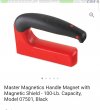So I just finished a knife and it came out perfect. I made a kydex sheath for it and yes I understand kydex over time will make scratches because of debris. Id like to think I've got the hang of kydex now as I haven't had this problem in a long time. I did wash the sheath out after all sanding and sheath work was done and before I took the tape off the blade.
So I sharpened the knife and was doing some sheathing of the blade, in and out a bunch of times to break it in and ensure nothing funny is going to happen. Well I noticed on one side of the knife in a 1" section of the bevel I got a scuff scratch! I cant let this go because it bugs me so much and my flats and bevels are sanded perpendicular. Would you run the bevel lightly back on the grinder, hand sand it out or buff it out some? I have a 400 grit flat and a 400 grit bevel under a fine scotch brite finish...
Thanks
So I sharpened the knife and was doing some sheathing of the blade, in and out a bunch of times to break it in and ensure nothing funny is going to happen. Well I noticed on one side of the knife in a 1" section of the bevel I got a scuff scratch! I cant let this go because it bugs me so much and my flats and bevels are sanded perpendicular. Would you run the bevel lightly back on the grinder, hand sand it out or buff it out some? I have a 400 grit flat and a 400 grit bevel under a fine scotch brite finish...
Thanks


